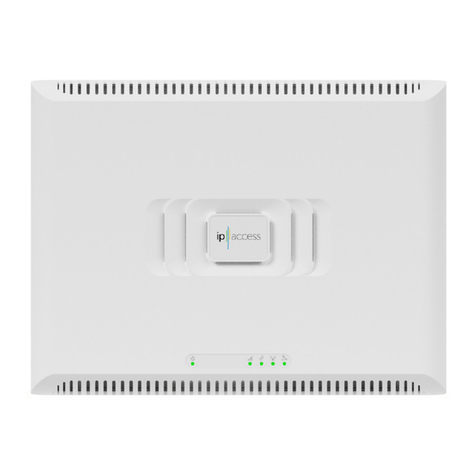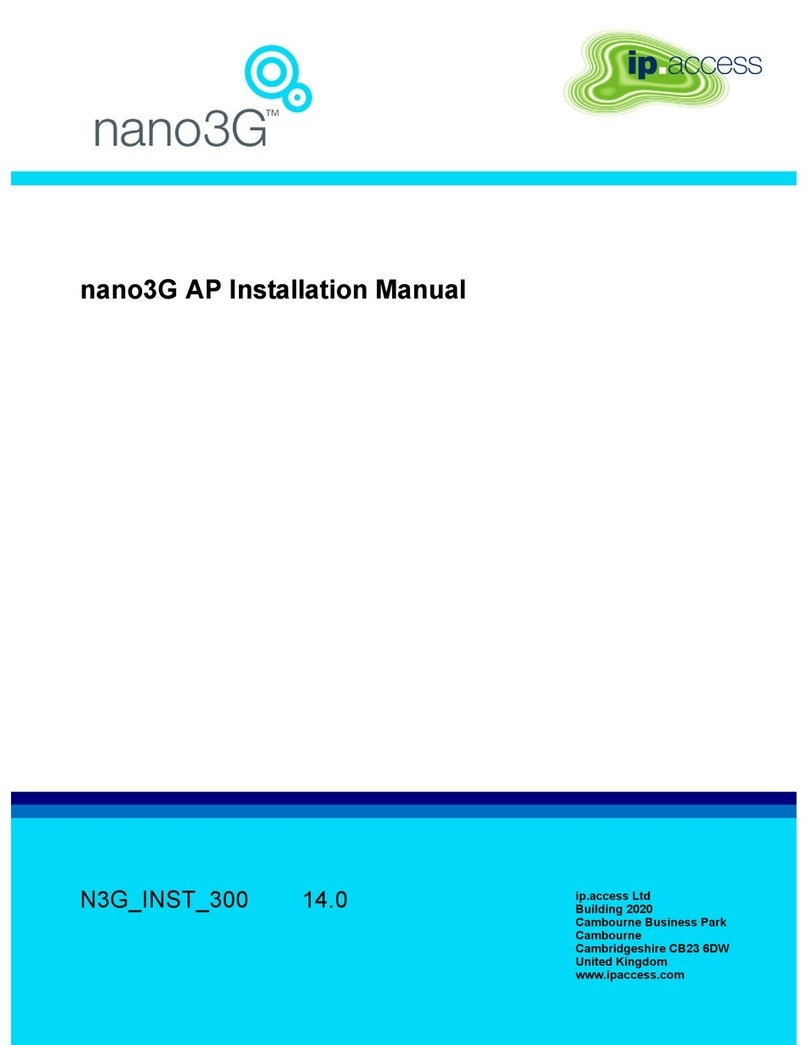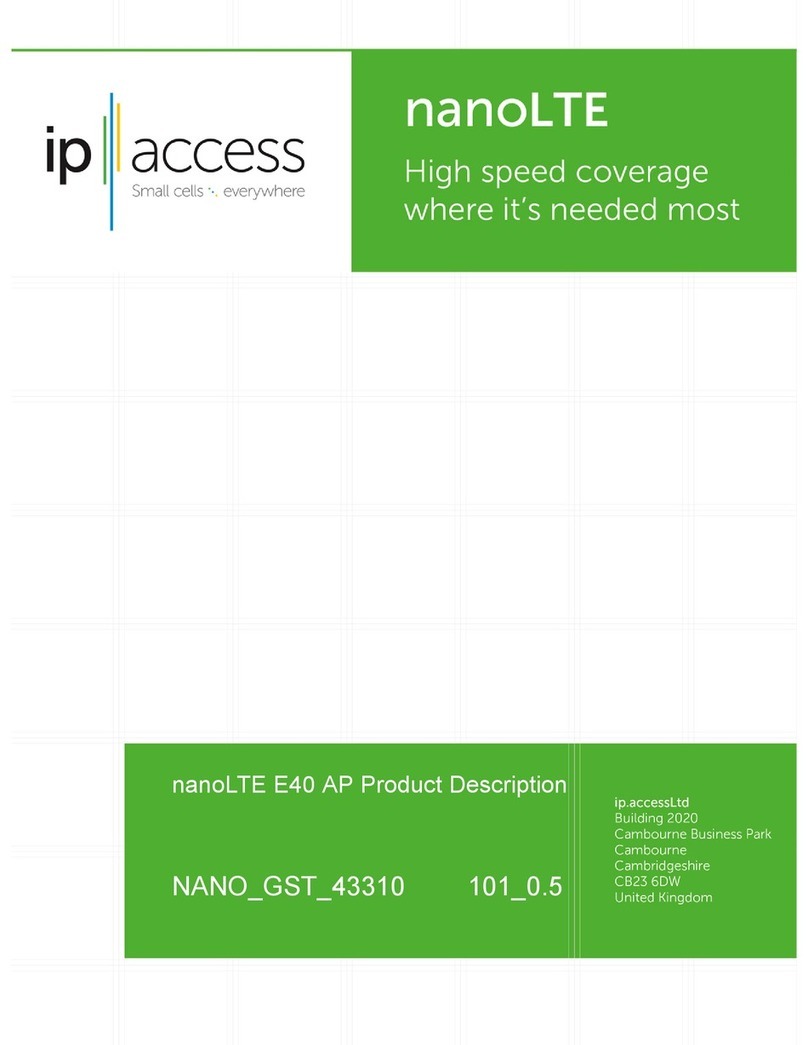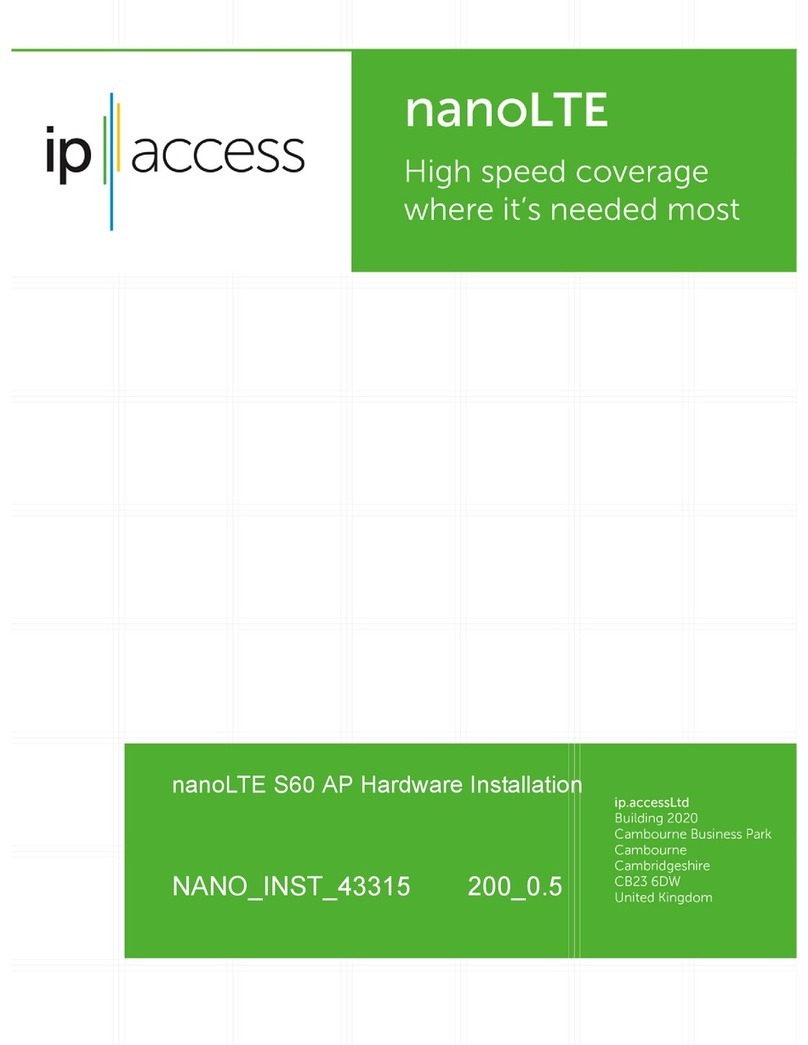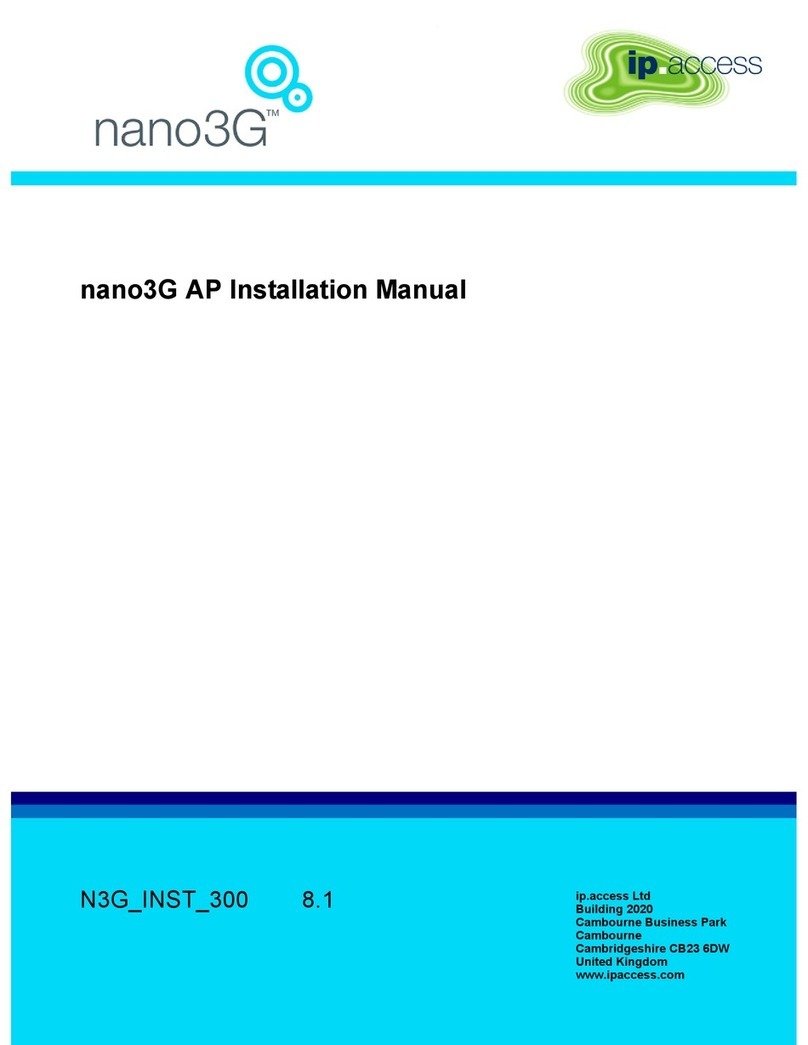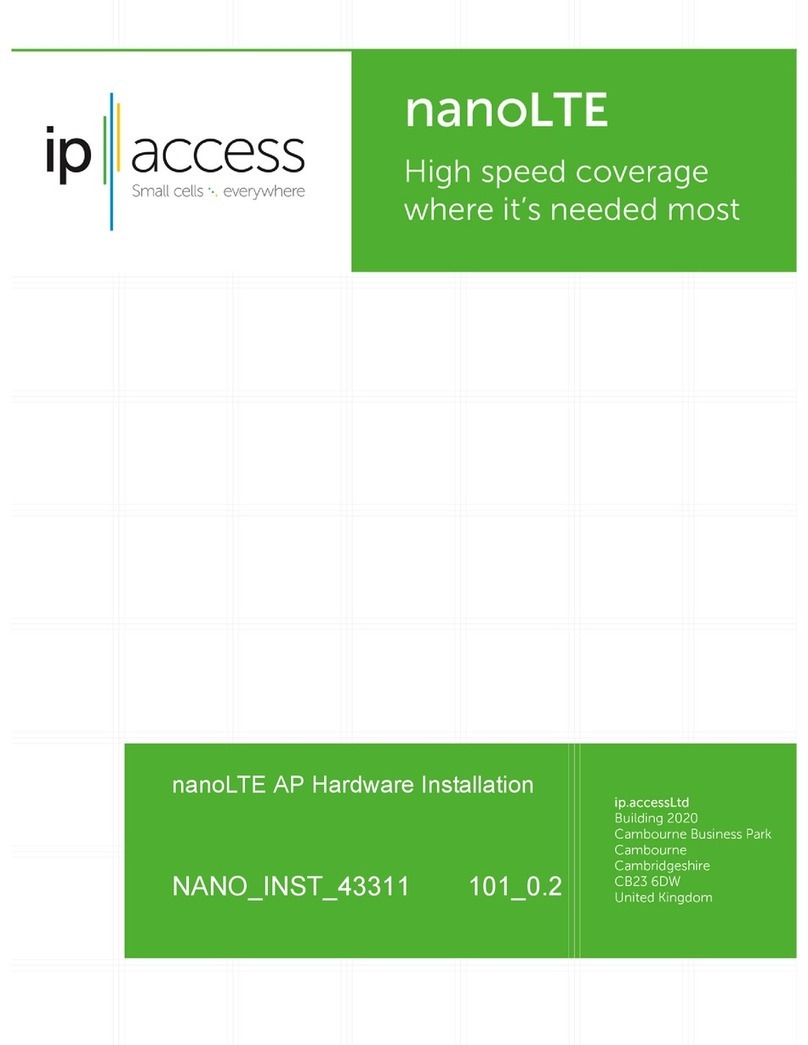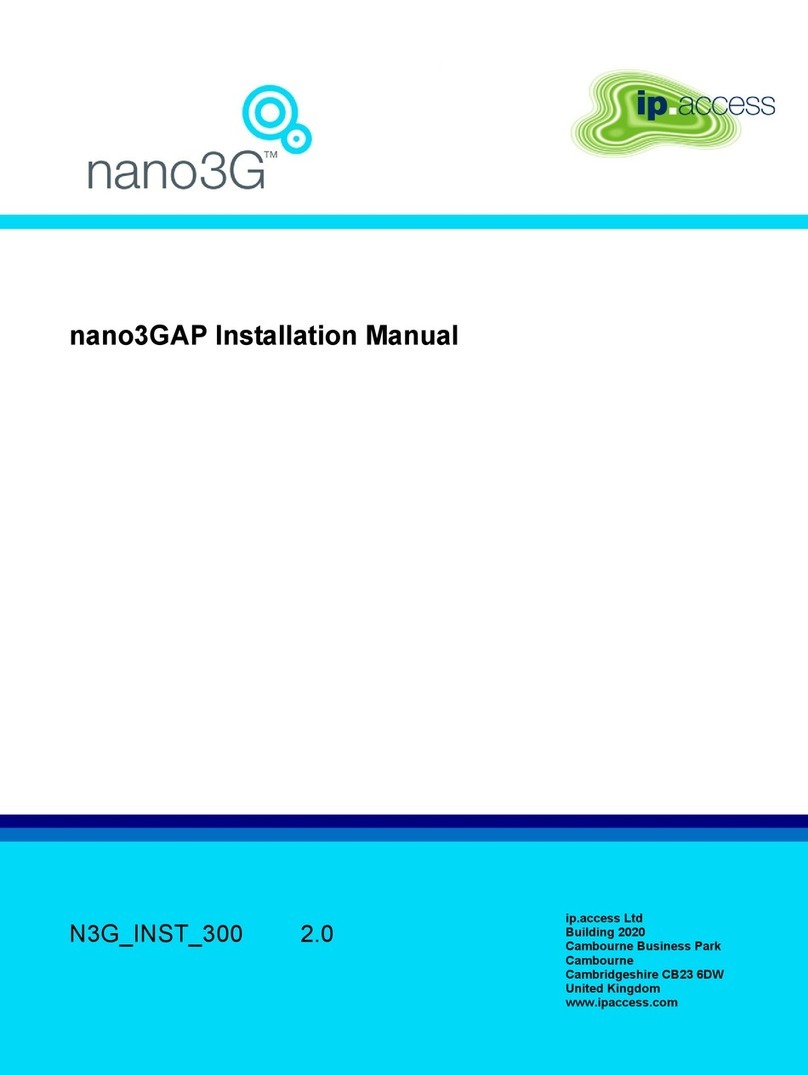
nano3G AP Installation Manual
N3G_INST_300 v292_1.0 for N3G_2.92 © ip.access Limited 2012 Page ii
3.2.1 Start the Create Site Wizard............................................................................... 31
3.2.2 Optional - Use an Existing AP Configuration...................................................... 32
3.2.3 Optional - File Selection ..................................................................................... 33
3.2.4 Optional - Select an AP Template ...................................................................... 35
3.2.5 Enter AP Identification Details............................................................................ 35
3.2.6 Select AP Location ............................................................................................. 36
3.2.7 Select NTP Servers............................................................................................ 37
3.2.8 Modify NAS and Network Listen Settings........................................................... 37
3.3 Apply an Attribute Configuration to the AP ...................................................... 42
3.3.1 Load a Configuration File for the AP .................................................................. 42
3.3.2 Apply an AP Template to the AP........................................................................ 43
4 Configuration File Preparation ........................................................... 45
4.1 Overview of Configuration Files ....................................................................... 45
4.2 Create a Configuration File for nano3G APs ................................................... 46
4.2.1 Save Attributes to File for One AP ..................................................................... 46
4.2.2 Save Attributes to File for Multiple APs .............................................................. 47
5 Commission a nano3G AP.................................................................. 49
5.1 Configure a Commissioning Terminal to Connect to the AP............................ 49
5.2 Start Up the AP ................................................................................................ 50
5.2.1 Start up a nano3G S8 AP................................................................................... 50
5.2.2 Start up a nano3G E8 AP or E16 AP ................................................................. 50
5.3 Access the Commissioning Web Page for the AP........................................... 51
5.4 Download Activities.......................................................................................... 53
5.4.1 Optional - Software Download............................................................................ 53
5.4.2 ATAS Check and Download............................................................................... 54
5.5 Configure the Connection to the NOS Server.................................................. 56
5.5.1 Static IP Configuration........................................................................................ 56
5.5.2 Configure the NOS Server Connection .............................................................. 57
5.5.3 Complete the AP Commissioning....................................................................... 57
5.6 Commissioning Finished.................................................................................. 59
5.6.1 Finished On Site Commissioning ....................................................................... 59
5.6.2 Finished Advance Commissioning ..................................................................... 59
6 nano3G AP Hardware Installation ...................................................... 60
6.1 Warnings and Regulatory Information ............................................................. 60
6.2 nano3G S8 AP Hardware Installation .............................................................. 61
6.2.1 Unpack the nano3G S8 AP ................................................................................ 61
6.2.2 Commission the nano3G S8 AP......................................................................... 62
6.2.3 Cable Connections ............................................................................................. 62
6.2.4 Mount the nano3G S8 AP .................................................................................. 63
6.3 nano3G S16 AP Hardware Installation ............................................................ 67
6.3.1 Unpack the nano3G S16 AP .............................................................................. 67
6.3.2 Commission the nano3G S16 AP....................................................................... 68
6.3.3 Cable Connections ............................................................................................. 68
6.3.4 Mount the nano3G S16 AP ................................................................................ 69






